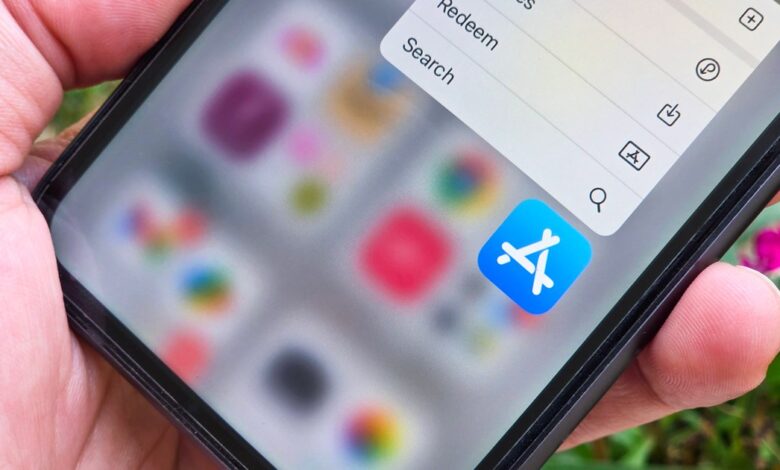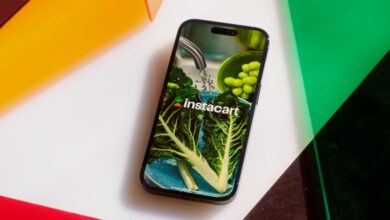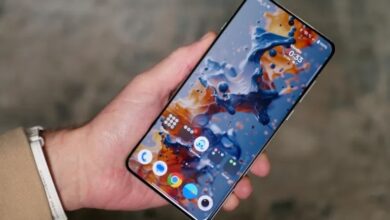Apple cuts App Store fees, but experts urge caution against new U.S. pricing guidelines

Apple’s iOS App Store is in for a big change. This sentiment is brewing among folks who create, sell, market, or scale apps for iOS, iPadOS, or other Apple devices. In addition to developers, users should benefit from the change — or at least, so we think.
For starters, Apple has conceded to changing its policy for commissions on any transactions within apps. App developers and publishers would rarely absorb these costs, which seep through to what the consumers must pay. So, if an app or subscription costs $10, you were likely paying up to $13 — based on how broad the app’s user base is. This should end now, easy the burden on your pocket. But there’s a lot more to the topic than immediately apparent, and we spoke to experts to break it down for us.
Before taking you through the development, here’s a quick lowdown.
Apple’s big change of heart
The changes in the App Store’s pricing policy have been in the making since 2021, when the court first ordered Apple to open up alternative payments options in the apps. This is — or, at least, appears to be — the culmination of an anticompetitive lawsuit filed by Fortnite‘s publisher Epic Games, and respite applies to all developers selling their services in the United States.
The saga began in 2020, Epic began offering Fortnite players alternative means to buy virtual in-game currencies and tokens directly without processing these payments through Apple. Miffed with this act of revolt, Apple blocked Epic’s developer’s account and banned Fortnite from the App Store. This ruling kicked off a sanguineous legal battle between the two, with a federal court giving a mixed ruling that required Apple to allow means for users to pay for app subscriptions using methods besides their Apple Pay accounts.
Apple challenged the ruling multiple times, used its general trope highlighting dangers to iOS’ security, and even approached the U.S. Supreme Court, which struck down the appeal. In 2024, Apple was finally forced to allow developers to include external payment methods in their apps — but at a slightly varied cost. Despite charging up to 30 percent commission on each transaction it facilitates, Apple allowed developers to open up external payments while still charging up to 27 percent — 12 percent instead of the previous 15 percent for developers with less than $1 million in annual revenue — on the transactions.
Apple reasoned this as a premium to enable safe transactions and for giving developers a platform to host and distribute their apps to billions of users. However, the 27 percent commission in addition to the additional costs for hosting a payment platform, accounting for taxation and compliances, and pouring resources to track payments — all while risking the possibility of annoying users for changing platforms for payments actually increased liabilities for developers.
Apple also required developers to apply for special “entitlements” before they could implement alternative payments methods, injected full-page warnings screens when they clicked on external payments buttons, prevented them from advertising the benefits of buying subscriptions outside the app.
This approach was further challenged by Epic, which was followed by Apple being lapped up by a California-based federal District Court in April 2025 for “willfully” engaging in anti-competitive practices and obstructing fair pricing within apps. The court saw Apple’s implementation as another attempt to discourage users and developers from leaving their payment platform by painting alternatives as scary and “insecure.”
The court also ordered federal proceedings against Apple’s Chief Financial Officer Luca Maestri, where he would be tried for “criminal contempt” for failing to implement the court’s previous directions.
Apple responded to the court order immediately by updating its pricing policy and eliminating any fees on transactions, effectively charging a zero percent commission on any transactions for users — only — in the U.S.
Reduced prices, no scary warnings, and other reasons for users to rejoice
With this ruling, the court effectively put an end — for now, it seems — to the commissions earned by Apple for external payments in the U.S. Notably, Apple may still charge up to 30% if the developer chooses to rely on Apple’s billing procedures. But it now allows developers to give users more options to subscribe to an app or purchase any in-app items using multiple payment options without any additional charges.
Since this reduces costs for developers, the benefits are expected to trickle down to consumers. Subscriptions costs should go down for consumers in the U.S. And while the decision to reduce prices rests totally on developers, we can hope for big ones, such as Epic, Spotify, Netflix, or PayPal, which launched a crusade against Apple to cut subscription prices immediately — or risk being seen under bad light after all.
More importantly, the court has instructed Apple to make the process more seamless by lifting restrictions. The iOS interface must no longer show “scary” warning screens when an app redirects you outside the app for payments, nor can it reject apps for incentivizing users to subscribe on the web instead of within the app.
Aside from the apparent benefit of reduced costs, the changes also open a breadth of payment options for the subscribers. Based on the payment platform the developers use, users may have the option to pay with credit or debit cards, ACH bank transfers, payments services such as Zelle, PayPal, or Venmo, and even cryptocurrencies. Certain platforms, such as Stripe, may also allow microloan options (also known as buy now, pay later or BNPL) like Klarna.
An absolute victory? Depends on whom you ask
While the ruling appears to favor users, it has some implications that cannot be overruled. Experts we spoke to helped us take stock of those implications and their indirect impact on the users.
Nathan Hudson, founder and CEO of Perceptycs, a global app growth and marketing agency based out of London, hails this as “great news for developers in the mobile space globally” and says “anyone who is selling to the U.S. customers can benefit from this.”
Hudson’s views are echoed by Lauren Henkin, the founder and CEO of The Humane Space (iOS/Android), a multimedia platform that enables learning and mental wellness through a mix of visually stimulating interface cue cards and immersive soundtracks. Henkin highlights, “the biggest benefit of this ruling is that app developers now have greater freedom to choose a payment path that is best for their business and their subscribers.” She adds the biggest benefactors of the ruling are “larger brands already offering some form of web-based payment option and paying the 30% platform fees.”
Cost benefits for developers
One of those larger brands benefiting from the ruling is Zumba — yes, it’s a trademarked brand that has come to be known as a common fitness routine due to its sheer popularity. Zumba is already in the 30% slab (making more than $1 million in annual revenue) and uses what is called a “web-to-app” sales funnel, where users can learn about the app on the website and subscribe to it even before downloading the app.
While this channel helps apps like Zumba entice more people, expecting people to first sign up for an app, then expecting them to use the same credentials to log into the account on their phones via mobile apps can lead to substantial friction. This strategy may work for controlling players such as Spotify or Netflix, which explicitly compel you to pay on their websites instead of the app, but may cost users for apps such as Zumba, despite their appeal.
For this reason, Lucy Levy, the chief consumer officer at the eponymous dance platform Zumba, sees significant scope for financial benefits in the change.
“For our business, the cost savings are significant,” Levy tells us. “If we execute effectively, this shift could become a major driver of LTV [or lifetime value] — not just due to reduced App Store fees, but also because web-based subscriptions often show better retention. It also opens the door to more aggressive pricing experimentation without the limitations of App Store pricing tiers.
To avoid losing users, Zumba has been offering the same subscription costs across the web and in-app interfaces, absorbing Apple’s fees in the latter. “This change gives us the opportunity to accelerate growth. Improved financial performance from web conversions could fuel scaled acquisition efforts and better ROI [or return on investment] across our channels,” Levy adds.
Complexities as a result of the changed guidelines
While the implemented changes might implore developers to explore options beyond Apple’s payment methods, certain aspects must be addressed carefully.
Despite their excitement, our interviewees add a word of caution, underlining some complexities that may not be immediately apparent. Smaller developers (earning less than $1 million in yearly revenue) “currently paying only 15 percent may need to weigh the potential friction against the cost of implementing and maintaining a new payment system—considering not just the development costs, but also maintenance and tax compliance,” Henkin says.
Hudson elaborates that many “developers aren’t aware of Global Sales Tax compliance and the responsibilities that come with managing external payments themselves. Handling sales tax compliance, dealing with chargebacks, processing refunds, preventing payment fraud, managing delinquent payments,” he adds, “can be a huge headache for apps growing at a rapid scale.” In a resounding blog Hudson wrote for RevenueCat, a platform that facilitates external transactions on iOS apps, among software intended for other platforms, he notes it’s difficult to be on top of these complementary processes, which could elicit building separate compliance or finance teams, which could eat a chunk of the 27 percent savings. For smaller businesses, where savings are relatively smaller at 15 percent, these expenses could feel significantly larger.
While the 30 (or 15) percent fee sounds exorbitant, Apple also allows developers to be free from any stress related to filing taxes and other regulatory paperwork, allowing them to focus on building products — and that’s precisely what Apple’s in front of the court was too. It doesn’t sound so bad when you look at it like that. Even worse, for developers also selling apps outside the U.S., these matters get even more complicated. Therefore, developers must test different workflows to ensure minimal wastage of time and resources to red tape.
Beyond any plausible tax compliance, directing consumers outside the app has another evident drawback that reduces chances of converting potential customers into paying ones.
The battle for user’s attention
Even though the court has directed Apple to rid away with “scare screens,” external payment methods add additional steps for payments. This increases the chances of losing the customer’s attention — or worse, leaving them with a bitter feeling about the payment process, which can lead them to choose not to subscribe. This is called a “drop-off,” and The Human Space’s Henkin says the checkout must be seamless enough to ensure that developers “can maintain [users’] attention long enough to complete the payment before they disengage.”
The ruling, however, does lessen this challenge compared to the previous setting. Without full-page warning screens, and with the use of buttons that align with the overall app’s aesthetic — rather than appearing oddly, developers can successfully convert them. Vitaly Davydov, CEO of Adapty, a company that helps integrate external payment workflows in apps, cautions in a LinkedIn post that conversions may still be lower for apps that aren’t exactly popular. A monumental challenge for developers would be to instill trust for external payments among users. Henkin adds it the best-suited scenario is for new environments to mirror other trusted payments flows.
Zumba’s Levy emphasizes the importance of continuous and rigorous experimentation to reach optimal channels. Developers must religiously study trends on how users behave in response to new payment screens to minimize metrics such as CPA (cost per acquisition). “The key will be rapid, smart testing,” she adds.
A hope for a global reform
The current ruling, as mentioned above, applies to subscription payments in the U.S. Apple is likely to continue charging its fees in other parts of the world, keeping subscription costs higher. South Korea may be the second region to implement similar rules, but the exact timeline remains unclear. As of last year, Korea Communications Commission (KCC), the local telecoms regulator, was still evaluating potential fines for both Apple and Google for not complying with its 2021 ruling requiring both to support third-party payments. In October 2024, the KCC warned both tech giants it would impose fines of roughly $50 million for abusing their position in the market.
The European Union took a different approach by forcing Apple to open up gates to alternative app stores in early 2024. However, Apple’s commission still for apps distributed via the App Store. However, changes in the U.S. could snowball into rectification at a global scale. It would also simplify the process by unifying payment flows for users worldwide instead of having separate systems for different regions. Beyond Apple’s ecosystem, such changes will also impact other platforms, including Android and other Google services, including Google Play.
Alas, this vision — no matter how cheering for both consumers and developers — may not realize soon. Experts, including Lucy Levy, expect a partial overturn. Apple itself, while hesitantly implementing these changes to avoid legal troubles, has said it would appeal the court’s latest injunction. After all, the $1 trillion app payments market is too mighty of an opportunity for it to let go. The chances of a judgment in Apple’s favor may be lower, especially since the U.S. Supreme Court previously struck down its appeal in 2024. But while we would be cautiously optimistic, we wouldn’t be so sure, given the changes in American politics since.
The upcoming WWDC 2025 conference in June will be a good time for Apple to address these topics. Though it’s unlike Apple to harp about failures, and we could expect silence unless it can birth a positive narrative despite its loss — of spirits, not in legal terms — in court. We reached out to Apple representatives to gather clarity on its plans to appeal the decision and learning how it plans to embrace new payment methods, but did not get a comment.
Matters like these don’t have instant resolution — contrary to Apple’s move in response to the court’s ruling — and we shall see developments in the coming months. Meanwhile, if you are a developer and selling to consumers in the U.S., proceed with the advice these experts shared with us. The idea is to be optimistic, but not lose sight of caution.





